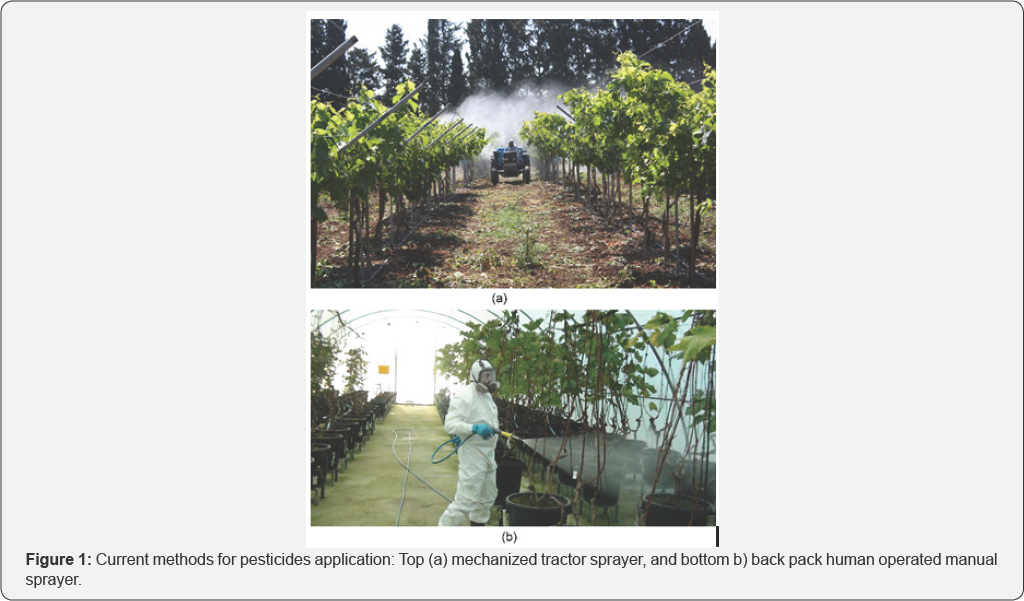Agricultural Robots in Targeted Spraying: A mini State-of-the-Art review- Juniper Publishers
Juniper Publishers- Journal of Robotics
Abstract
This article presents the most recent contributions
to the field of agricultural robotics, with a focus on robot sprayers.
The objective is to demonstrate the latest developments, specifically on
robot sprayer systems for precision spraying (e.g. for weed control).
The summary of the review shows that feasibility has been demonstrated
in a number of projects with significant results especially in pesticide
use reduction, with good spraying coverage for this complex
agricultural task
Keywords: Agriculture; Robotics and automation; Precision spraying; Human-robot interaction
Introduction
One of the most frequent and important task in
agriculture is the application of fungicides, herbicides and
insecticides.It is frequent because diseases are a common occurrence on
plants which affect the plant production, and it is important because it
can have a significant impact on crop yield and quality. Fungicides,
herbicides and insecticides are all pesticides used in plant protection.
Current methods, either mechanical or manual, used for pesticide
application, include human involvement. Figure 1
illustrates the excessive amount of pesticides released to the
surrounding environment and the exposure of the farmers to these
dangerous chemicals during the spraying process.

Robotic technology is an alternative method for
spraying in agriculture, which provides multiple benefits, such as
safety, sustainability and environmental impact. In terms of safety, it
removes the farmer from the exposure to dangerous chemicals [1]. In addition, less pesticides means healthier food products for the consumer [2].
In terms of agriculture sustainability, robotic technology can provide a
way to reduce inputs (e.g. by reducing the quantity of pesticides used)
and make the most efficient usage of pesticide controls (e.g. by
targeted spraying). Furthermore, targeted spraying can have a
significant reduction on environmental impact [3,4], since with the current methods a major fraction of the pesticides sprayed, accumulate in the soil (i.e. soil degradation).
Robotic systems for agriculture fall under the "umbrella” of precision agriculture [5].
Many systems have been developed for various agricultural tasks such as
monitoring, harvesting, spraying, weeding, cultivation, and planting [6-9]. A comprehensive review of automation and robots in agriculture [10]
identifies the challenges of robotic systems in agriculture, and
describes the different automation systems with application examples.



Comments
Post a Comment